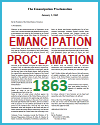1. Illustrate the triangular trade.
2. Describe the middle passage.
3. compare and contrast the economies of New England and the Southern colonies.
4. Discuss slavery in the American colonies.
5. Analyze the causes and effects of the French and Indian War.
Click here to print. Answers will vary.
The economies of New England and the Southern colonies during the colonial period of American history were distinct and shaped by different factors.
New England Colonies:
Economic Activities:
- Shipbuilding and Maritime Industry: New England had a strong shipbuilding industry. The region's dense forests provided the timber needed for ship construction. The maritime industry also encompassed fishing, whaling, and trading.
- Trade and commerce: The rocky soil and short growing season limited agriculture. New England colonists engaged in trade and commerce, exporting goods such as fish, lumber, and rum. Triangular trade routes connected New England with the Caribbean and Europe.
- Craftsmanship: Skilled craftsmen and artisans thrived in New England, producing items like furniture, textiles, and metalwork.
Labor System:
- Limited Slavery: Slavery was less prevalent in New England compared to the Southern colonies. While some enslaved individuals were present, the region's economy did not rely heavily on enslaved labor.
Social Structure:
- Religious Influence: New England was initially settled by Puritans seeking religious freedom. Their influence shaped the region's culture and economic practices. communities were often organized around congregations.
- Educational Focus: New England prioritized education, establishing institutions like Harvard College (1636) and emphasizing literacy.
Southern Colonies:
Economic Activities:
- Agriculture: The Southern colonies, including Virginia, Maryland, the Carolinas, and Georgia, relied primarily on agriculture. Cash crops such as tobacco, rice, and indigo were cultivated for export. Plantations were Central to the economy.
- Slavery: The Southern colonies had a heavy reliance on enslaved labor to cultivate and maintain large plantations. Slavery was deeply ingrained in the economic and social fabric of the South.
- Export-Oriented: Southern colonies focused on producing goods for export to Europe, particularly Britain. The profitability of cash crops drove the region's economy.
Labor System:
- Slavery: Slavery was the cornerstone of the Southern economy. Enslaved Africans provided the labor force for plantation agriculture, and the institution of slavery had a lasting impact on the South's social structure.
Social Structure:
- Plantation Aristocracy: A wealthy plantation elite, often consisting of large landowners, dominated the Southern social hierarchy. They held significant political and economic power.
- Rural vs. Urban: Southern society was primarily rural, with a focus on agricultural production. Cities were fewer and less developed compared to the North.
- Class Disparities: Social and economic disparities were pronounced, with a small elite class at the top and a large population of enslaved individuals and poor white farmers at the bottom.
Contrasts:
- Economic Focus: New England's economy centered on trade, shipbuilding, and craftsmanship, while the Southern colonies' economy was primarily agrarian, with a focus on cash crop agriculture.
- Labor Systems: New England had limited slavery, whereas the Southern colonies heavily relied on enslaved labor for agriculture.
- Social Structure: New England had a more egalitarian social structure compared to the hierarchical plantation society of the South.
- Cultural Influences: New England's culture was influenced by Puritan religious values, while the Southern colonies had a distinct plantation aristocracy and culture.
- Educational Priorities: New England placed a strong emphasis on education, including the establishment of educational institutions, while education in the South was often limited, particularly for enslaved individuals.
The economies of New England and the Southern colonies were shaped by their geographic conditions, labor systems, and cultural influences. These differences had a lasting impact on the development of each region and contributed to the economic and social disparities between them during the colonial period.
|













